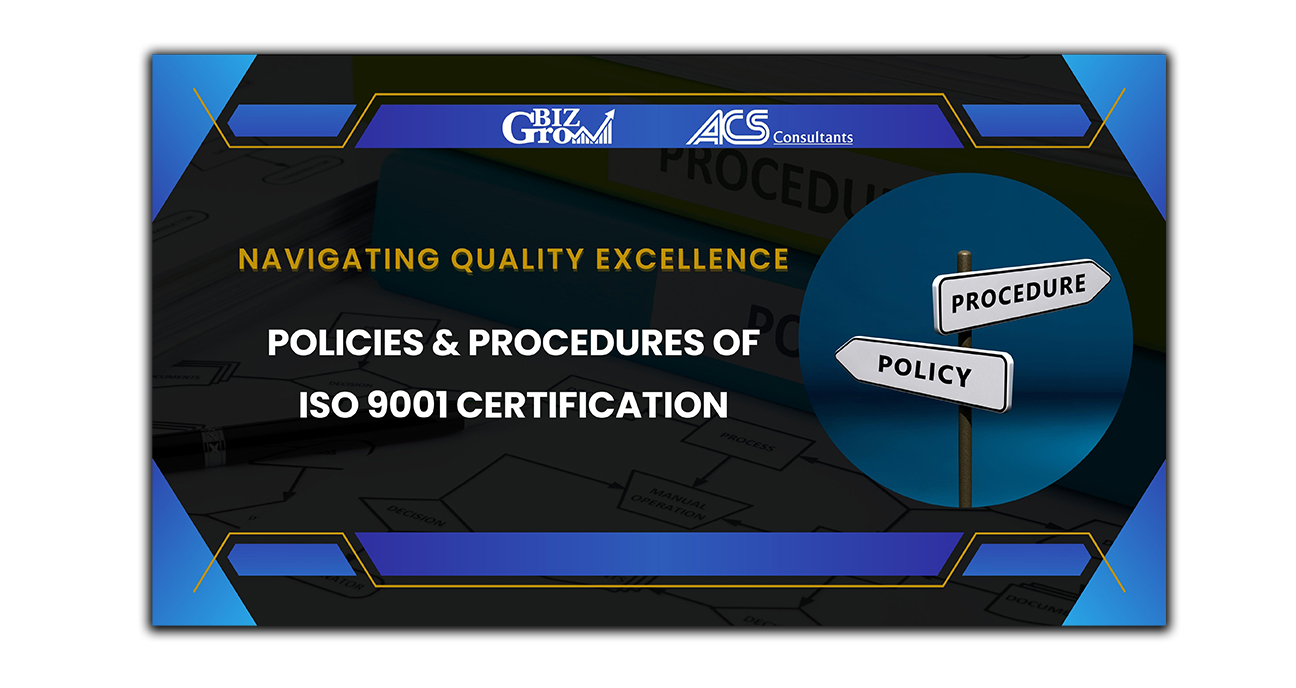Introduction:
ISO 9001 certification is based on the ISO 9001:2015 standard. It helps organisations establish and uphold a Quality Management System (QMS). These standards provide a structured framework, outlining the requirements for organisations to meet and exceed. In the pursuit of ISO 9001 certification, organisations typically develop policies and procedures to align with these requirements.
ISO 9001 is based on important quality management principles, such as focusing on customers, involving top management, taking a process-oriented approach, making decisions based on evidence, and committing to continuous improvement. Organisations that adopt ISO 9001 aim to meet customer needs, improve satisfaction, and consistently provide products and services that meet high quality standards.
Key Policies and Procedures:
Quality Policy: This high-level statement articulates the organisation’s unwavering commitment to quality, customer satisfaction, and continuous improvement. It establishes the overall direction and objectives for the QMS.
Quality Objectives: Aligned with the quality policy, measurable objectives are set. Objectives that follow the SMART criteria are used to drive improvement initiatives and are used as benchmarks for monitoring and evaluation.
Documented Information: ISO 9001 necessitates the creation and upkeep of documented information supporting the QMS. The Quality Manual provides an overview of the QMS and its processes. The document includes instructions for important processes.
Risk-based Thinking: ISO 9001:2015 emphasises the importance of considering risks and opportunities in managing the QMS. Identifying, assessing, and addressing risks are key processes in effective quality management.
Management Review: Periodic evaluations led by top management to assess QMS performance, implemented actions, improvement opportunities, and resource allocation decisions.
Internal Audits: An internal audit program is crucial for systematically evaluating QMS conformance and effectiveness. Internal audits pinpoint areas for improvement and ensure compliance with ISO 9001 requirements.
Corrective and Preventive Actions: Organisations must have processes for correcting and preventing nonconformities. This includes analysing the root cause, taking corrective actions, and verifying their effectiveness.
Conclusion:
ISO 9001 certification, obtained through an external audit, shows that an organisation is committed to quality and ongoing improvement. It increases credibility, builds customer trust, and creates new business chances. By adopting ISO 9001, organisations establish a strong quality management system, encourage improvement, and improve customer satisfaction. This standard not only sets a standard but also helps organisations achieve ongoing excellence in quality.
ACS Consultants helps businesses get certifications like ISO9001:2015, SIA-ACS BS7858, SafeContractor, Internal Audit Services, and more. ACS Consultants has a team of skilled Internal Auditors who are experienced and knowledgeable in the latest trends and best practices in their fields. ACS Consultants work closely with organisations to create tailored solutions that align with each organisation’s unique needs and requirements.
Let our experts coordinate you through the process!



